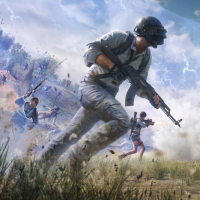Bad Days plunges players into a psychological survival odyssey where mundane struggles morph into existential threats. Navigate deteriorating mental health, fractured relationships, and a reality that warps under stress. Each choice—whether self-destructive or redemptive—reshapes your path through a week where every sunrise feels like a fresh disaster.
Fractured Reality Mechanics
1. Perception Filters – Environments degrade visually (walls cracking, colors leaching) as stress escalates, hiding clues or revealing phantom threats based on your character’s anxiety levels.
2. Time Loop Paradoxes – Repeatedly relive traumatic moments with accumulating memory fragments; alter dialogue to rewrite outcomes or succumb to despair-triggered game overs.
3. Improvised Therapy – Journaling minigames temporarily stabilize sanity, but over-reliance risks NPCs discovering your vulnerabilities and exploiting them.
Interpersonal Minefields
1. Trust Elasticity – Confide in a coworker about panic attacks, and they might cover your shifts—or gaslight you to steal promotions during your breakdowns.
2. Family Erosion – Ignore your sister’s calls to focus on work deadlines, and she stages an intervention; prioritize her, and your job crumbles, triggering eviction subplots.
3. Stranger Reliance – Accept help from a cryptic neighbor offering sedatives, only to later find their basement filled with surveillance feeds of your apartment.
Environmental Storytelling & Secrets
1. Augmented Reality Clues – Use a cracked smartphone camera to scan rooms for hidden symbols (cult graffiti, stalker codes), piecing together who’s manipulating your collapse.
2. Echoed Whispers – Random audio glitches during loading screens hint at repressed memories—replay to decode them via spectrogram tools.
3. Foreshadowing Props – A flickering hallway light in Chapter 1 becomes a strobe-lit boss arena in Chapter 5 if neglected during maintenance choices.


















Preview: